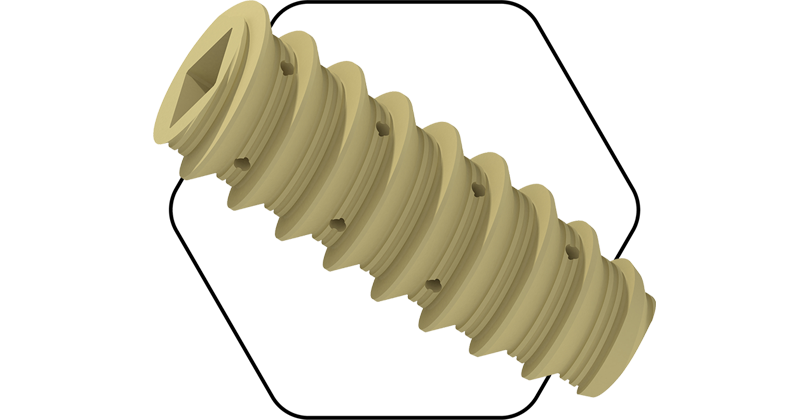
The shift of orthopedic procedures from hospitals to ambulatory surgery centers (ASCs) continues to be a hot topic. The spine segment has experienced a radical acceleration in the shift to outpatient procedures from 2018 to 2021, according to data collected by Sg2, a strategic consultancy providing healthcare market data and trend analysis.
It is common to see lumbar laminectomies and anterior cervical discectomy and fusions (ACDF) performed in an ASC. Increasingly, one-level transforaminal lumbar interbody fusion (TLIF) and endoscopic procedures are also making the move. The speed at which these procedures shift depends on various factors, including surgeon training and comfort level.
“The progression of case types is driven by the surgeon’s experience and the center’s ability to perform specific procedures safely and effectively,” said Robert S. Bray Jr., M.D., a neurological spine surgeon and CEO & Founding Director of DISC Sports and Spine Center (DISC), an outpatient center providing minimally invasive spine procedures and advanced arthroscopic techniques. “There are no artificial growth limits. Our center saw 1,000 cases last year and is seeing about 18% to 20% growth per quarter.”
Sg2 notes that from 2013 to 2019, the number of ASCs in the U.S. specializing in spine grew from 35 to 145. Ultimately, the decision of where to do the surgery falls on the physician. Hospitals have to use their judgment, as well.
“There are many ‘rules’ to decide what can be done as an outpatient vs. inpatient. Ultimately, the surgeon has to use their discretion,” said Alok Sharan, M.D., Director, Spine and Orthopedics at NJ Spine and Wellness and Chief Medical Officer at Doc.Social. “The more complex the issues, the less that shift over to ASCs is likely for some surgeons who are not comfortable with them.”
Drivers of ASC Procedure Shift
Moving spinal procedures from hospitals to ASCs is influenced by various factors. Here are five main drivers from our conversations with surgeons and industry consultants.
1 No Surprise: The COVID-19 Pandemic
Like everything else, spinal surgeries were impacted by the COVID-19 pandemic. As hospitals became overwhelmed with cases, beds became scarce and inpatient O.R.s were closed to elective surgeries.
The pandemic revealed the fragility of inpatient care, and procedures moved to ASCs as a result. Furthermore, even after hospitals reopened O.R.s to elective procedures, patients still feared being in a hospital setting during the ongoing pandemic.
2 Patient Demand is Increasing
Speaking of patient preferences, many are deciding that ASCs are a more appealing route and have begun asking their surgeons if it’s an option. In two years of UnitedHealthcare data, Patient Reported Outcomes show low complication rates, decreased cost, improved clinical outcomes and 99% patient satisfaction with surgeries performed at ASCs, according to Dr. Bray. Not only is the experience typically better, but the price can also play a role, he said.
“I think cost is a tremendous issue. We know that many insurance plans are changing where patients bear more financial risk,” Dr. Sharan said. “Because ASCs are cheaper than hospitals to some degree, the patients also want the ASC.”
3 Enabling Technology and Techniques Have Improved
Enabling technologies and protocols are important aspects in the shift to ASCs. For example, navigation technology plays a small role in spinal procedures now, but will likely play a much more significant role in the future. Navigation systems help drive the shift because the technology allows for smaller incisions.
“Whereas in the past you may have needed to make a big incision, now if you’re more precise with where you need to go, you can make a smaller incision and decrease your surgical footprint,” Dr. Sharan said. “I think the use of navigation technology has helped us decrease our surgical footprint.”
The ability to perform spinal surgeries without general anesthesia has also accelerated the shift to ASCs. Dr. Sharan is a pioneer in a technique that avoids general anesthesia and uses novel regional anesthetic blocks in the spine.
“We coined the term Awake Spine Surgery,” he said. “We’ve shown with our data, and it’s been confirmed with multiple other surgeons, that when you go from using general to regional anesthesia in the spine, you get a 50% reduction in your length of stay. So that means a huge cohort of patients can be done on an outpatient basis.”
There has also been a recent influx of technology companies that have developed pre-hab solutions, including exercises to increase patient strength and health before a spinal procedure. These kinds of technologies aid in more successful outcomes and can ultimately reduce recovery time post-op.
4 Surgeons Want to Participate in Joint Venture ASCs
Historically, surgeons sought hospital partnerships in the development of ASCs. But they were generally met with a lukewarm response, according to Dr. Bray. This led to surgeons developing ASCs with their own resources or with the financial and operational support of ASC development companies.
“Consequently, many hospitals are playing catch up in the ASC setting and are increasingly re-engaging with surgeons to collaboratively develop ASCs,” he said.
There are opportunities for hospitals to leverage their size to help make hospital/physician partnerships more attractive from the supply and resource standpoints, as integration can play an important role.
Donnelle Jageman, Director of Intelligence at Sg2, gave the example of working with a hospital system that was trying to convince its physician to partner with them on an ASC.
“They know that these procedures are moving to outpatient spaces whether or not they want them to,” Jageman said. “Patients are doing it. Payors are pushing it. The hospital will either lose the volume altogether or figure out how to perform surgeries outpatient and still make money.”
5 Ambulatory Cases Have Reimbursement Benefit
Payment policies always tend to be an influential factor. Insurance companies use pre-authorization power to move cases to spine ASCs, mainly as a cost-savings mechanism. At the same time, reimbursement is going down, particularly in cervical and lumbar fusions, according to Sg2. As payors push for procedures in ambulatory settings, providers look to respond to receive pre-authorization.
“Reimbursement is quite different from an inpatient to an HOPD to an ASC,” said Cory Jones, Associate Principal at Sg2. “We also see from an ASC up to 40% to 45% difference in reimbursement or costs associated with cervical fusions versus inpatients.”
Role of the Spine Companies
As spine surgeries move to ambulatory settings, orthopedic device manufacturers should be aware of and actively support the transition. To do so, they must consider product portfolios that include minimally invasive implants and instruments, enabling technology and other ancillary surgical tools.
“Device companies should develop the tools, resources and processes to enable the shift,” Dr. Sharan said. “The move to outpatient spine surgery has already started. Unfortunately, many device companies use a legacy business model based on inpatient reimbursement. When considering an outpatient strategy, device companies should create a separate business unit with its own P&L, not encumbered by a legacy business model.”
HT
Heather Tunstall is a BONEZONE Contributor.




